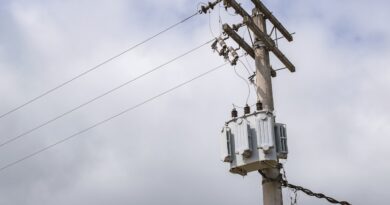Is Your Workplace Electrically Secure? Discover the Power of Safety Audits
Introduction
In today’s modern world, electricity plays a vital role in powering businesses of all sizes. From lighting and equipment to computer systems and machinery, electrical infrastructure is the lifeblood of any workplace. However, with this reliance on electricity comes the need for utmost safety and security. Electrical accidents and incidents can result in devastating consequences, including injuries, property damage, and even loss of life. To ensure a safe and secure workplace environment, organizations should consider the power of safety audits.
Understanding Safety Audits
A safety audit is a systematic and comprehensive examination of an organization’s electrical infrastructure, practices, and procedures to identify potential hazards and risks. It involves a thorough evaluation of the workplace’s electrical systems, equipment, and maintenance processes to determine compliance with electrical safety standards, regulations, and best practices. Safety audits are typically conducted by qualified electrical professionals or certified auditors.
Benefits of Safety Audits
- Risk Identification and Mitigation: Safety audits provide a critical opportunity to identify potential electrical hazards and risks within the workplace. By thoroughly assessing electrical systems, equipment, and processes, audits help pinpoint potential fire hazards, electrical shock risks, faulty wiring, and other electrical dangers. This knowledge enables organizations to take proactive measures to mitigate these risks, minimizing the likelihood of accidents or incidents.
- Compliance with Regulations: Electrical safety regulations and standards are established to ensure the well-being of employees and protect businesses from legal liabilities. Safety audits help organizations ensure compliance with these regulations, reducing the risk of penalties, fines, and legal consequences.
- Enhanced Workplace Safety Culture: By prioritizing safety audits, organizations send a clear message to employees that their well-being is a top priority. This emphasis on safety fosters a positive safety culture, encouraging employees to be vigilant, report hazards, and adhere to safe electrical practices. A strong safety culture leads to fewer accidents, increased productivity, and improved employee morale.
- Cost Savings: Safety audits can lead to significant cost savings in the long run. By identifying and addressing potential electrical hazards before they cause accidents or incidents, organizations avoid costly repairs, property damage, medical expenses, and legal fees. Additionally, audits may reveal opportunities to optimize energy consumption and reduce electrical waste, resulting in reduced operational costs.
- Continuous Improvement: Safety audits are not a one-time endeavor but rather a part of an ongoing process. Regular audits help organizations continuously monitor and improve their electrical safety measures, ensuring that any new hazards or risks are promptly identified and addressed. This iterative approach allows for a proactive stance towards workplace safety.
Conclusion
Prioritizing electrical safety in the workplace is paramount to protect employees, assets, and the overall success of the organization. Safety audits serve as a powerful tool to identify potential electrical hazards, ensure compliance with regulations, foster a positive safety culture, and drive cost savings. By investing in regular safety audits and taking proactive measures to address identified risks, organizations can create a secure and thriving workplace environment. Remember, the power of safety audits lies in their ability to prevent accidents before they occur, ultimately safeguarding lives and livelihoods.



